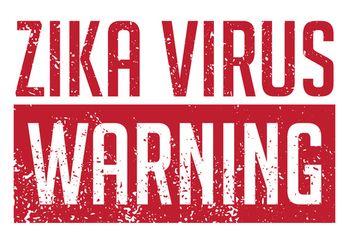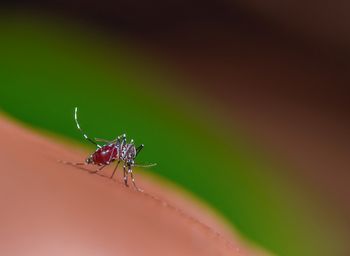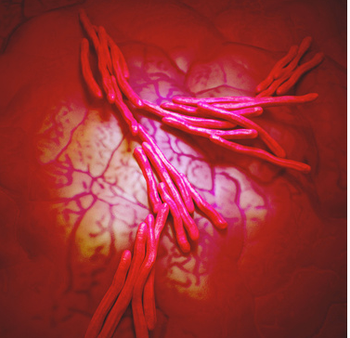
As researchers discover Chikungunya-carrying mosquitoes in Brazil, a new study analyzes the impact of the Zika virus on the area.

As researchers discover Chikungunya-carrying mosquitoes in Brazil, a new study analyzes the impact of the Zika virus on the area.

The CDC just released a study outlining areas where an increase of Aedes mosquitoes was observed in 2016. In addition, researchers report on Zika-related complications observed in 7 infants, postmortem.

Researchers from Yale University have come up with a new “chemical process” that may aid in the development of a new class of antibiotics.

Two adults were hospitalized in Maine as a result of Powassan virus encephalitis.

Researchers from the University of Nebraska Medical Center conducted a trial to measure if using a specific device for blood collection would reduce the rate of culture contamination.

In the most recent MMWR, the CDC released data indicating the risk of Zika congenital infection resulting into complications based on trimester of infection.

May's top articles included news on HIV, Lyme disease, updates to nosocomial pneumonia guidelines, and more.

The university reports that infection has subsided in several individuals; however, more people continue to report illness.

Research presented at the 2017 American Thoracic Society International Conference reports that treatment with antibiotics failed in 1 in 4 adult patients who present with community-acquired pneumonia in the outpatient setting.

After 3 individuals test positive for the mosquito-borne virus in Gujarat, WHO confirms that the Zika virus is currently circulating in the country.

Research published in Nature on May 24, suggests that the Zika virus has been circulating in the Americas silently for far longer than previously thought.

Researchers from Beaumont hospital have developed a Zika virus diagnostic test that yields quick results. In addition, a Zika vaccine may be coming our way, but perhaps not in the way we hoped.

Researchers from Stanford University use mechanistic models to predict the temperatures at which mosquitoes are likely to contract Zika and other arboviral diseases and transmit them to humans.

Due to a significant drop in new Zika cases, the Ministry of Health has declared the national emergency status over.

In case you missed them, here are last month's Top 5 news articles from Contagion®.

The CDC just released updated testing recommendations for asymptomatic pregnant women with possible exposure to the Zika virus.

The results of a recent study reveal a high prevalence of colonization of multidrug-resistant gram-negative bacteria in nursing home residents, emphasizing the need to enhance infection control and prevention in these institutions.

Researchers may have discovered a way to prevent Zika, Dengue and Chikungunya viruses from replicating in human cells.

Researchers from Rutgers University have identified a group of compounds that may stop tuberculosis from becoming drug-resistant.

Not much is known about how the genetic makeup of the virus impacts infected individuals, at least, until now.

Using a model implemented in Europe in 2013 to estimate HAI prevalence by the European Centre for Disease Prevention and Control (ECDC), Nicola Thompson, PhD, CDC, and her team estimated the national burden of HAIs in US nursing homes. In their poster, Dr. Thompson and her colleagues reported preliminary data from their pilot study.

The World Health Organization just published the first ever Global Hepatitis Report, which notes that the viral hepatitis mortality rate is increasing worldwide, while deaths caused by HIV and tuberculosis continues to drop.

A new report from Centers for Disease Control and Prevention reveals information on a 5-month-old male infant who was diagnosed with the emerging tick-borne virus in Connecticut in 2016.

Researchers report that Zika virus RNA was isolated in a number of Aedes albopictus mosquitoes in Bahia, Brazil.

Researchers collected biofilms from several hospitals in four non-neighboring countries to determine if the persistence of multidrug-resistant organisms in biofilms on hospital surfaces was a worldwide problem.

Researchers from The University of Texas Medical Branch at Galveston (UTMB) and Instituto Evandro Chagas (IEC) have published their findings on the live-attenuated vaccine candidate in the journal Nature Medicine.

The Texas Department of State Health and Human Services has changed its testing recommendations for residents in six counties.

Robin Jump, MD, PhD, discussed the challenges associated with isolation precautions in long-term care settings, specifically nursing homes during her presentation at the SHEA Spring 2017 Conference on March 30, 2017.

The US Food and Drug Administration just approved indications for two hepatitis C drugs to be used in pediatric patients.

News on Heliobacter pylori, Zika, Clostridium difficile, Powassan virus, and influenza make up the top 5 news articles from Contagion® in March 2017.

Published: November 21st 2016 | Updated:

Published: November 22nd 2016 | Updated:

Published: November 23rd 2016 | Updated:

Published: November 24th 2016 | Updated:

Published: November 25th 2016 | Updated:

Published: November 29th 2016 | Updated: